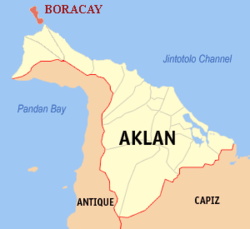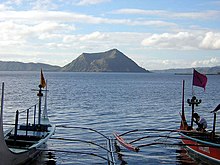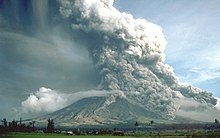There is one certain Dota player who plays on any type of multiplayer
wc3, wether it is bnet or some other illegal way of playing. His nicks
online include of: Lilbuddah, Lilbudda, aznbob, bob, he is the biggest
leaver and noob. He never finishes any game when he can, he always
insults every person he comes accros, he is one of the people you hope
you never meet in real life.
So all try to ignore this guy if you ever see him at all!
So all try to ignore this guy if you ever see him at all!
Wednesday, June 20, 2007
Ragequits and noobie comments!
Today's post is about one of the most annoying things you can come
across in a game of dota! Some people when they are loseing a game, get
too emotion when it comes down to a stupid video game, we get people
swearing, insulting other and other strange things over the internet.
One main thing that grinds my gears is the fact that people make up excuses for loseing, "oh if only i had this, then we would be winning." God, yes of course you would be winning if you had you best character with the ultimate set up, but thats IF it happens, thats just like saying, Oh yeah, i would be winning if i used cheats. IF can mean alot of things, it is one of the lamest excuses in the history of any game, "If i did this i would of won!" Well i got news for you buddy, you didnt do it, so you lost, deal with it and dont cry about it, its a simple game that people over react about all the time.
Yes alot of us are guilty for little spirts of anger, but when comes down to something as simple as losing a game, thats when you know that its timeout for a week or two, go out and get a LIFE.
Next thing on my list is the amount of people that leave a game because they get annoyed for dieing first, or getting new people on there team or for things again, not going there way. Calm down, focus, do whatever, just do not quit in the middle of a game, it ruins the whole fun, games are made for fun, you can have fun while loseing, i have proved it myself, just because you think you are the best, doesnt mean you are, Get over yourself!!!!!!
One main thing that grinds my gears is the fact that people make up excuses for loseing, "oh if only i had this, then we would be winning." God, yes of course you would be winning if you had you best character with the ultimate set up, but thats IF it happens, thats just like saying, Oh yeah, i would be winning if i used cheats. IF can mean alot of things, it is one of the lamest excuses in the history of any game, "If i did this i would of won!" Well i got news for you buddy, you didnt do it, so you lost, deal with it and dont cry about it, its a simple game that people over react about all the time.
Yes alot of us are guilty for little spirts of anger, but when comes down to something as simple as losing a game, thats when you know that its timeout for a week or two, go out and get a LIFE.
Next thing on my list is the amount of people that leave a game because they get annoyed for dieing first, or getting new people on there team or for things again, not going there way. Calm down, focus, do whatever, just do not quit in the middle of a game, it ruins the whole fun, games are made for fun, you can have fun while loseing, i have proved it myself, just because you think you are the best, doesnt mean you are, Get over yourself!!!!!!
Friday, June 15, 2007
Ban list
The
Warcraft 3 banlist is a usefull little program which is easily
downloaded. This program Lets you know when people leave a game, when
friends enter battlenet, when friends enter a game and lots of other
features.
Banlists main feature is Ban, while you are in the middle of a game and some leaves/lags out, a voice should come up saying "Leaver detected" from here you can chose to do one of two things, enter the command /banlast to add the person to your ban list, or ignore it. Before a game is started, banlist can bring up other peoples pings by the command /pingall, this then makes a beeping noise, and you the press Ctrl+V to paste the pings into chat.It also comes with an origin finder, you type in /fromall and it detects what region the player is from, like the /pingall command you need to Ctrl+paste the results.
One of the most useful parts of this program is the friendslist part, once you log into battlenet, it loads your friends list. If you wanted to follow a mate into a game, all you have to do is get the mate to join a game, when he joins, banlist will make a beep noise, from here all you do is Ctrl+V the text into the game name section, and there you have it, in the same game withing seconds.
In all, banlist is used by most battlenet users of warcraft 3, wether it be dota/melee/td maps, best thing to do is, have a steady connection and dont get too annoyed if you dont want to be tagged as a Leaver or lagger.
Banlists main feature is Ban, while you are in the middle of a game and some leaves/lags out, a voice should come up saying "Leaver detected" from here you can chose to do one of two things, enter the command /banlast to add the person to your ban list, or ignore it. Before a game is started, banlist can bring up other peoples pings by the command /pingall, this then makes a beeping noise, and you the press Ctrl+V to paste the pings into chat.It also comes with an origin finder, you type in /fromall and it detects what region the player is from, like the /pingall command you need to Ctrl+paste the results.
One of the most useful parts of this program is the friendslist part, once you log into battlenet, it loads your friends list. If you wanted to follow a mate into a game, all you have to do is get the mate to join a game, when he joins, banlist will make a beep noise, from here all you do is Ctrl+V the text into the game name section, and there you have it, in the same game withing seconds.
In all, banlist is used by most battlenet users of warcraft 3, wether it be dota/melee/td maps, best thing to do is, have a steady connection and dont get too annoyed if you dont want to be tagged as a Leaver or lagger.
Wednesday, June 13, 2007
Ogre Magi Strat!
 Greetings
all, i am going to post my item strat for the Hero Ogre Magi. Ogre Magi
is a basic hero which most people will say is played based on luck. The
Ogre Magi is a Melee intel based hero which is something you dont come
up against most of the time. From the first level, you can chose from
either 3 spells, Fireblast (stun and damage), Ignite (Aoe fire damage
over time and slow) and Bloodlust (increases attack and move speed). At
level 6 you can choose to get your "ultimate" spell 'Multicast' (chance
on spell hit to cast the same spell multiple times)
Greetings
all, i am going to post my item strat for the Hero Ogre Magi. Ogre Magi
is a basic hero which most people will say is played based on luck. The
Ogre Magi is a Melee intel based hero which is something you dont come
up against most of the time. From the first level, you can chose from
either 3 spells, Fireblast (stun and damage), Ignite (Aoe fire damage
over time and slow) and Bloodlust (increases attack and move speed). At
level 6 you can choose to get your "ultimate" spell 'Multicast' (chance
on spell hit to cast the same spell multiple times)Order of which i learn skills
Level 1: Fireblast
Level 2: Ignite
Level 3: Fireblast
Level 4: Ignite
Level 5: Fireblast
Level 6: Multicast
Level 7: Fireblast
Level 8: Ignite
Level 9: Ignite
Level 10: Bloodlust
Level 11: Multicast
Level 12: Bloodlust
Level 13: Bloodlust
Level 14: Bloodlust
Level 15: Attribute +
Level 16: Multicast
Level 17 - 25: Attribute +
When it comes down to getting items, i cant tell you when exactly you can buy them, depends on you income flow, 5 v 5 game, less gold to start with, 3 v 3 more gold then 5 v 5, things like that. My main order of getting items is:
Item 1: Boots of speed
Item 2: Robe of Magi
Item 3: Staff of wizardry
Item 4: Void stone
Item 4: Eul's scepter of divinity Recipe
Item 5: Robe of Magi
Item 6: Sobi mask
Item 7: Quaterstaff (at this point you should get oblivion staff)
Item 8: Guinsoo's scythe of Vyse recipe
Item 9: Boots of Travel recipe
Item 10: Messerschimidts Reaver
Item 11: Vitality Booster
Item 12: Heart of Tarrasque recipe
Item 2: Robe of Magi
Item 3: Staff of wizardry
Item 4: Void stone
Item 4: Eul's scepter of divinity Recipe
Item 5: Robe of Magi
Item 6: Sobi mask
Item 7: Quaterstaff (at this point you should get oblivion staff)
Item 8: Guinsoo's scythe of Vyse recipe
Item 9: Boots of Travel recipe
Item 10: Messerschimidts Reaver
Item 11: Vitality Booster
Item 12: Heart of Tarrasque recipe
I have never needed to get anymore then these in a game, if you get to a point like this, just buy what you think is right :)
------------------------------------------------------------------------------------------
------------------------------------------------------------------------------------------
Tuesday, June 12, 2007
What not to do!
While playing Dota on the internet, the best thing what not to do is,
DO NOT DRAG THE GAME OUT. If you can finish the game, then finish it,
dont walking around and kill Roshan when you have mega creeps, dont
feed off heros just to get your "perfect" item spec.
Many players who do this on the internet end up on a Banlist, my person banlist has about 100 people on it on the server U.S West that do not finish the game because they think because they are winning, they can do whatever the heck they want to do. Well guess what? YOUR WRONG, the most annoying thing that can happen is, a 30 minute game turning into a 1 hour game so you dont get time to play another. It is not fun and it is basically the worst thing in the history of the Dota maps!
To all those idiots that do this, learn to play, because you are in control of a game, doesnt make you god, finish the game off before you get kicked from every damned game that you want to join!!
Thats my personal opinion, come back for more info, tips and fire offs coming soon :D
------------------------------------------------------------------------------------------
------------------------------------------------------------------------------------------
Many players who do this on the internet end up on a Banlist, my person banlist has about 100 people on it on the server U.S West that do not finish the game because they think because they are winning, they can do whatever the heck they want to do. Well guess what? YOUR WRONG, the most annoying thing that can happen is, a 30 minute game turning into a 1 hour game so you dont get time to play another. It is not fun and it is basically the worst thing in the history of the Dota maps!
To all those idiots that do this, learn to play, because you are in control of a game, doesnt make you god, finish the game off before you get kicked from every damned game that you want to join!!
Thats my personal opinion, come back for more info, tips and fire offs coming soon :D
------------------------------------------------------------------------------------------
------------------------------------------------------------------------------------------
Monday, June 11, 2007
Welcome!
This site will try to be updated daily for your every day usage and to keep you up to date with all current versions of the map. So come back on a regular basis to have a look at what i can offer you guys when it comes to this very popular Frozen Throne map.


















